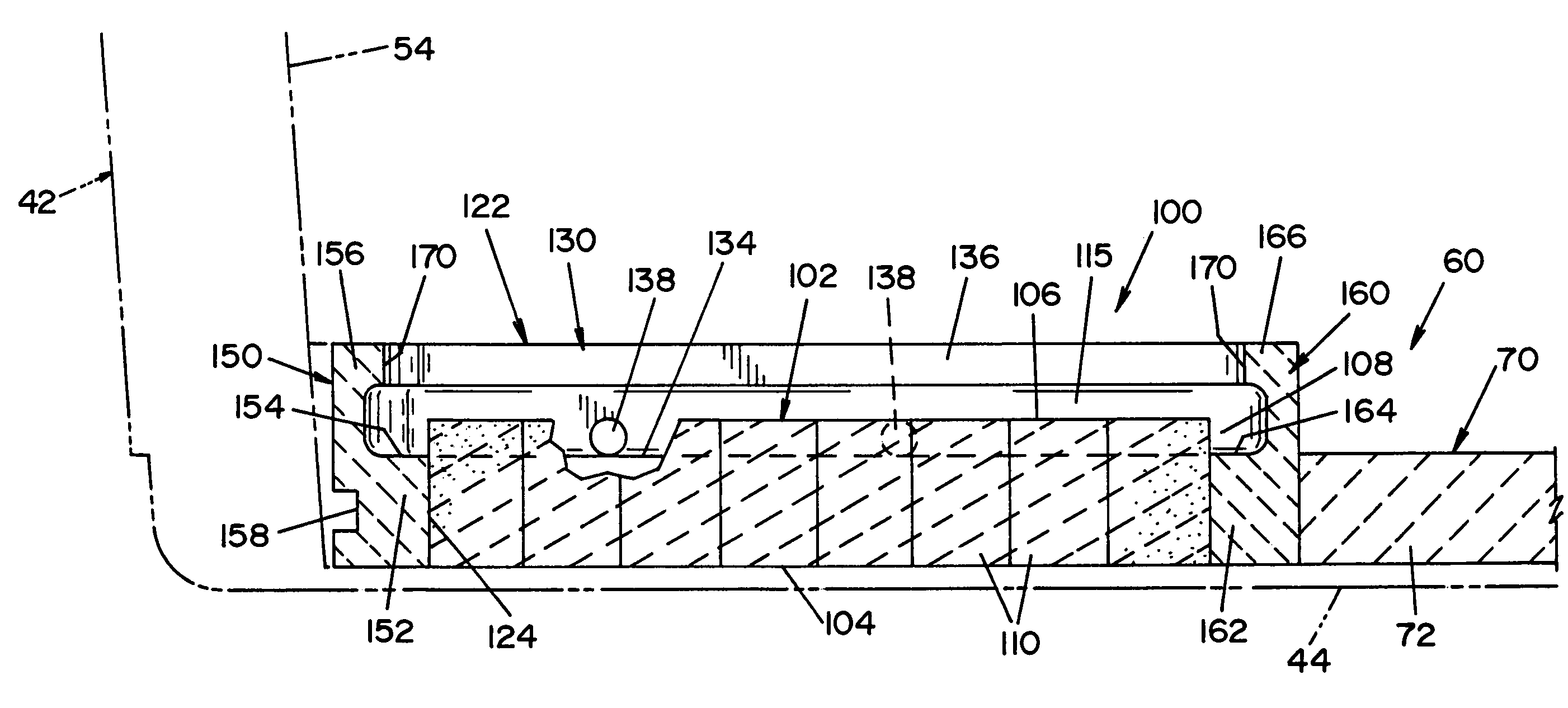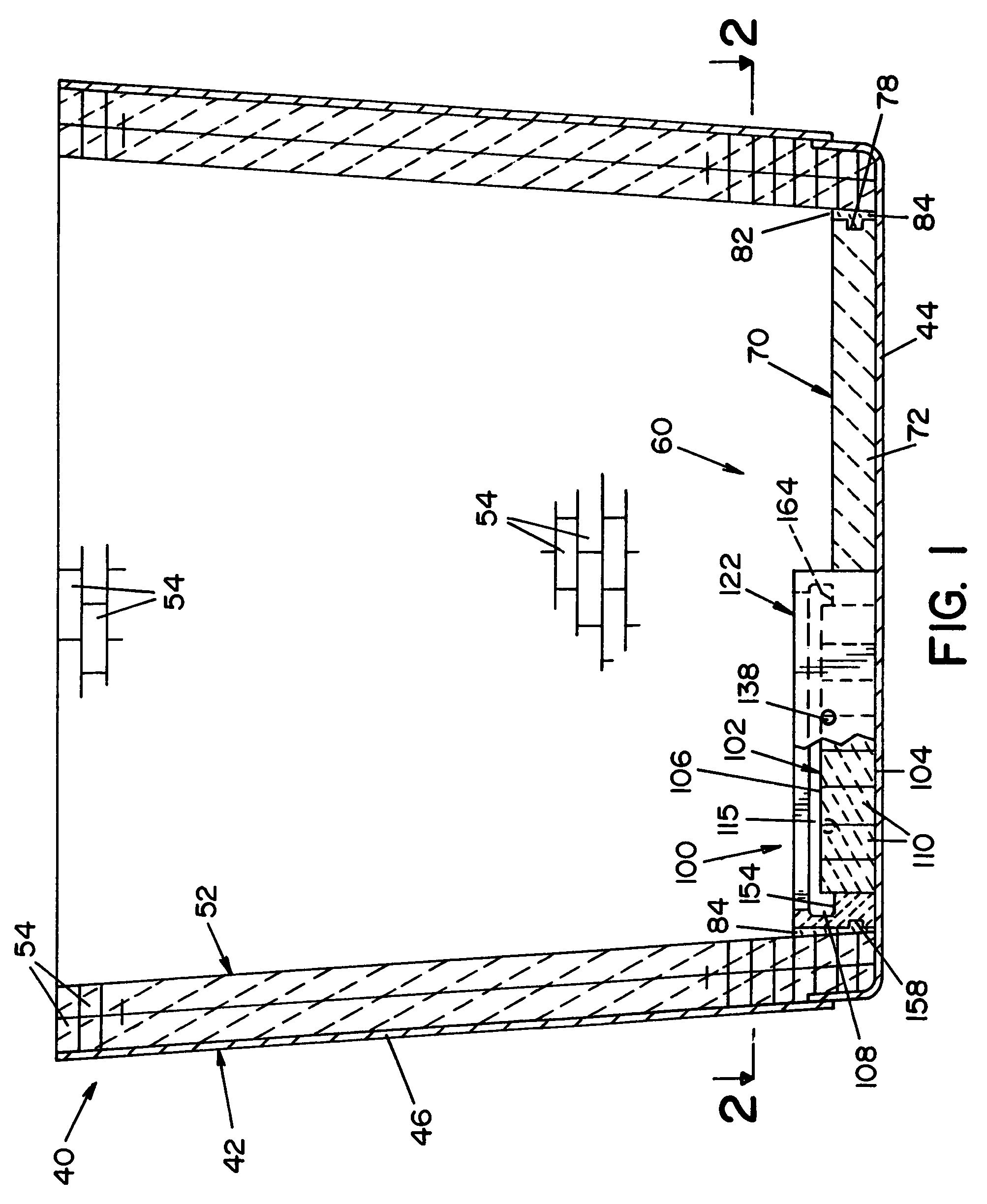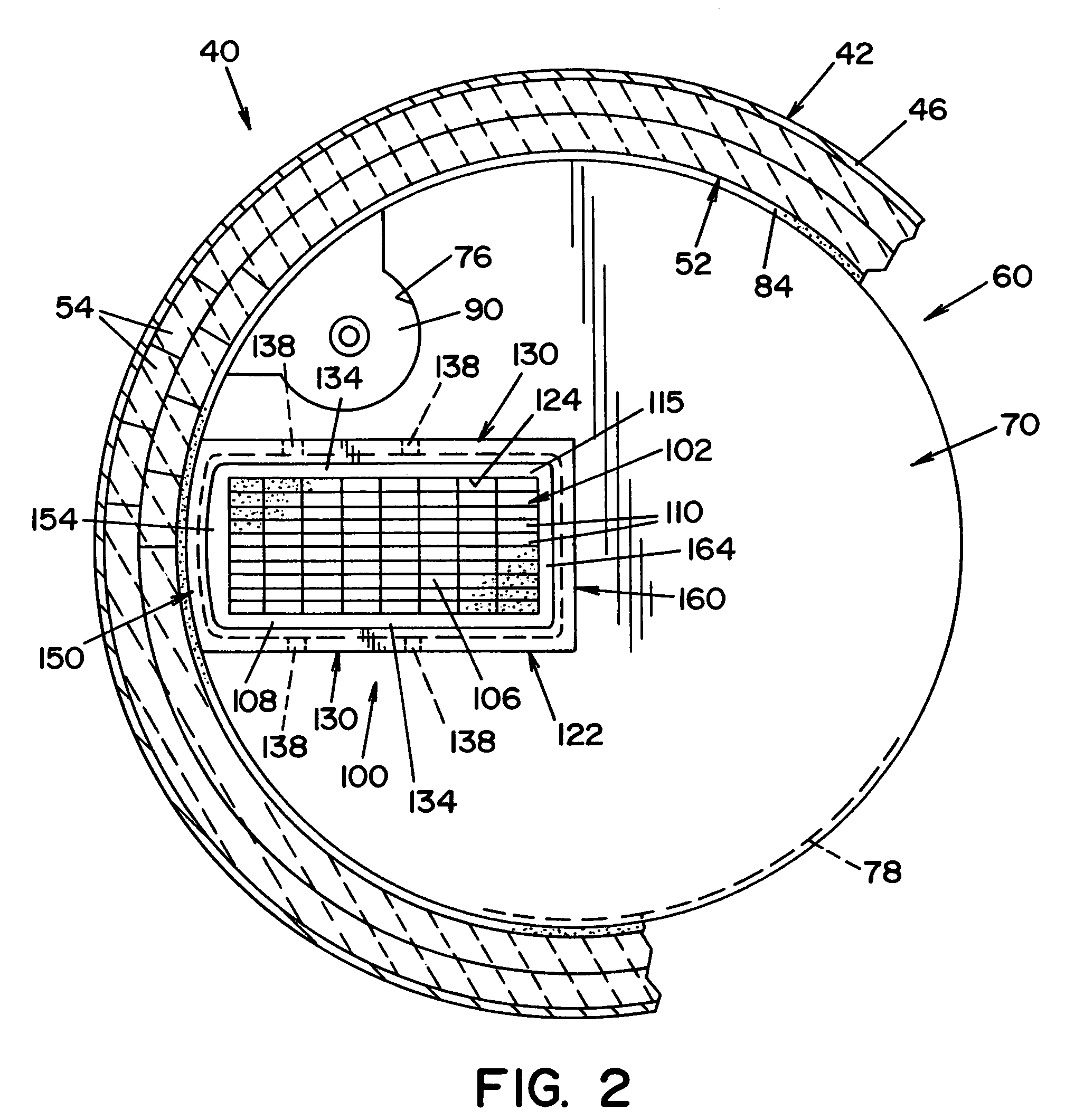Impact pad for metallurgical vessels
a technology for impact pads and metallurgical vessels, which is applied in the direction of manufacturing converters, furnaces, manufacturing tools, etc., can solve the problems of high wear in this region, affecting the quality of metallurgical products, and requiring significant labor and downtime for casting wall protectors, so as to minimize the splashing of molten metal, reduce the wear of the vessel, and minimize the effect of turbulence in molten metal
- Summary
- Abstract
- Description
- Claims
- Application Information
AI Technical Summary
Benefits of technology
Problems solved by technology
Method used
Image
Examples
first embodiment
[0031]A bottom lining 60 (best seen in FIG. 3) is adapted to be disposed on bottom 44 of ladle 40 within refractory lining 52. Bottom lining 60 is basically comprised of an impact pad 100, according to the present invention, embedded within a monolithic, refractory slab 70 of refractory material 72. Bottom lining 60 may be “pre-formed” or “cast-in-place”. With respect to a “pre-formed” bottom lining 60, impact pad 100 is pre-formed in a first mold and then placed into a second mold (not shown) to cast slab 70 in place around impact pad 100. After curing and setting, bottom lining 60 is removed from the second mold and placed within bottom 44 of ladle 40 as a pre-assembled unitary component. With respect to a “cast-in-place” bottom lining 60, impact pad 100 is preferably pre-formed outside of ladle 40 and then placed in bottom 44 of ladle 40. Thereafter, slab 70 is cast around impact pad 100 inside ladle 40. Bottom lining 60 is shown and described in the illustrated embodiment as a “...
second embodiment
[0047]Referring now to FIGS. 6-8, the present invention is shown. Impact pad 200 is similar in most respects to impact pad 100. However, frame portion 222 of impact pad 200 includes a rear wall 250 having an upper section 256 that extends further upward than upper section 156 of rear wall 150 of impact pad 100. Accordingly, rear wall 250 has a height that is greater than the height of side walls 130 and front wall 160. Like rear wall 150 of impact pad 100, rear wall 250 is curved to match the profile of refractory lining 52 disposed along the inner surface of side wall 46. The increased height of rear wall 250 provides additional protection to refractory lining 52 from splashing of molten metal. As best seen in FIG. 8, upper section 256 has a sloped front face 257 for directing molten metal toward interior cavity 115.
[0048]In the embodiment of the present invention shown in FIGS. 6-8, the increased height of rear wall 250, as compared to rear wall 150, provides additional protection...
third embodiment
[0049]FIGS. 9-10 illustrate the present invention. Impact pad 300 has a bottom wall portion 302 comprised of differently sized refractory bricks 110 arranged in an upright, soldiered configuration. In this regard, different sizes of bricks 110 are arranged to form bottom wall portion 302 having multiple sections, designated 302a, 302b, and 302c that form a stepped configuration. Bottom wall portion 302 has an upper surface comprised of surfaces 306a, 306b and 306c that correspond respectively to sections 302a, 302b and 302c. Bottom wall portion 302 has a generally planar lower surface 304. Upper section 166 is omitted from front wall 160, thus providing an opening 118 for the flow of molten metal out of interior cavity 115, as it descends the stepped configuration of bottom wall portion 302.
[0050]In the embodiment of the present invention shown in FIGS. 9-10, the stepped configuration of bottom wall portion 302 guides molten metal toward the center of ladle 40. In this regard, molte...
PUM
| Property | Measurement | Unit |
|---|---|---|
| density | aaaaa | aaaaa |
| melting temperature | aaaaa | aaaaa |
| temperature | aaaaa | aaaaa |
Abstract
Description
Claims
Application Information
 Login to View More
Login to View More - R&D
- Intellectual Property
- Life Sciences
- Materials
- Tech Scout
- Unparalleled Data Quality
- Higher Quality Content
- 60% Fewer Hallucinations
Browse by: Latest US Patents, China's latest patents, Technical Efficacy Thesaurus, Application Domain, Technology Topic, Popular Technical Reports.
© 2025 PatSnap. All rights reserved.Legal|Privacy policy|Modern Slavery Act Transparency Statement|Sitemap|About US| Contact US: help@patsnap.com



